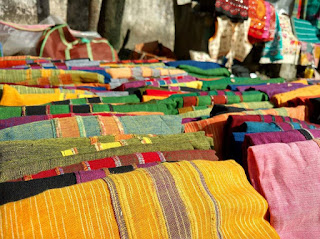When I started exploring fashion trends of Bengal, I was really surprised to see the hidden treasure of Bengal. With the change of colors in various parts of Bengal, it’s tradition, culture and people changes and along with them, fashion gets change. Incredible isn’t it! I was surprised to know the types of Bengal sarees we are having in here. Honestly, like any other person, I have a thought that sarees are only traditional and not in trend with regular fashion. It’s not easy to maintain and hard to carry. But no! Bengal has variety of sarees which are not only more than trending but also has our culture crafted in it. And to mention it’s maintainability, it’s absolutely no hassle.
In last few days I have been to many corners of Bengal to explore what new we are having and the list is pretty long. I would love to mention few of them here for the sake of sharing my little knowledge what I gathered in last few days. So let’s have a look.
I started my journey from a very renowned place, I have heard from my mother, mother-in-law, neighbors and many others. This place is famous for its cotton sarees. Let me break the suspense now, the place is Shantipur in Nadia district. On each Saturday, they have an open-air market of sarees. Usually weavers from nearby villages come there to sell their products. Shantipur is famous for its sarees like Linen, Khadi, Tant, Moklin and some types of Jamdani. They have done innovations on these sarees and modified them to a brand new look that is ideal as office wear, party wear etc. The smart look of these sarees are the most important to note.
I came across many of the weavers and try to know what kinds of sarees they are making and how they sell them. One of them took me to his home to introduce me to his family. He showed me his loom and all the types of sarees he used to make. I never had such experience and I was overwhelmed by his nature and his hospitality. I got a great knowledge from him about making of handloom sarees.
The process of making khesh sarees is very simple. Basically khesh is a recycled product. The wrap is with new yarn and weft is with strips of thin cloth obtained by tearing old sarees. The end result is so beautiful and trendy. On the other hand, making kantha stitch saree, requires great amount of patience and time. It is generally done on silk sarees (tussar, Bangalore silk etc which are imported). But now they have started doing it on artificial silk as well. Kantha stitch is nothing but simple running stitch along the edges. The colorful patterns and designs that are embroidered on the sarees resulted in the name "Nakshi Kantha", which was derived from the Bengali word "naksha", which refers to artistic patterns.
My journey has just started and I have a lot more place to explore in West Bengal.

